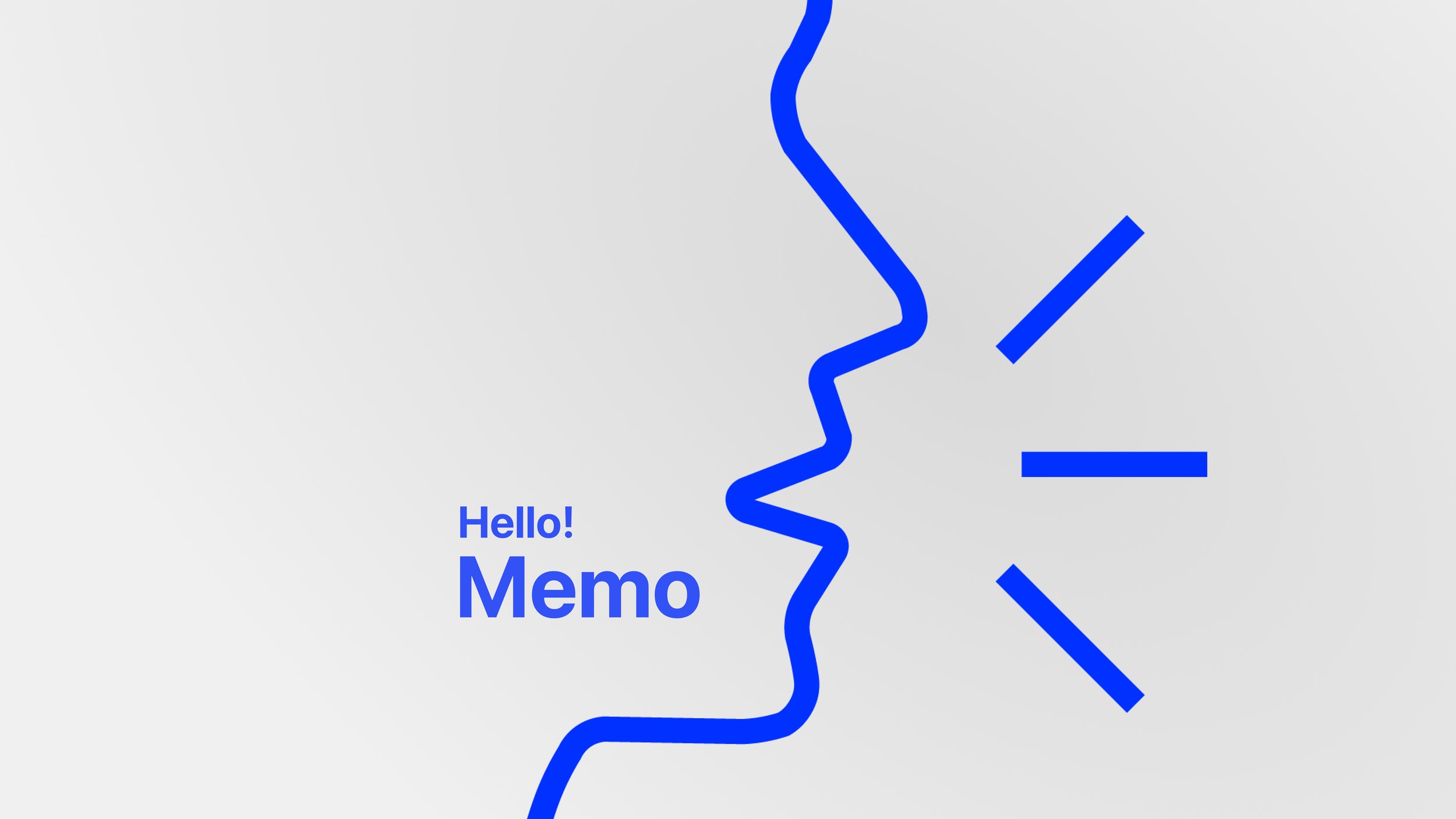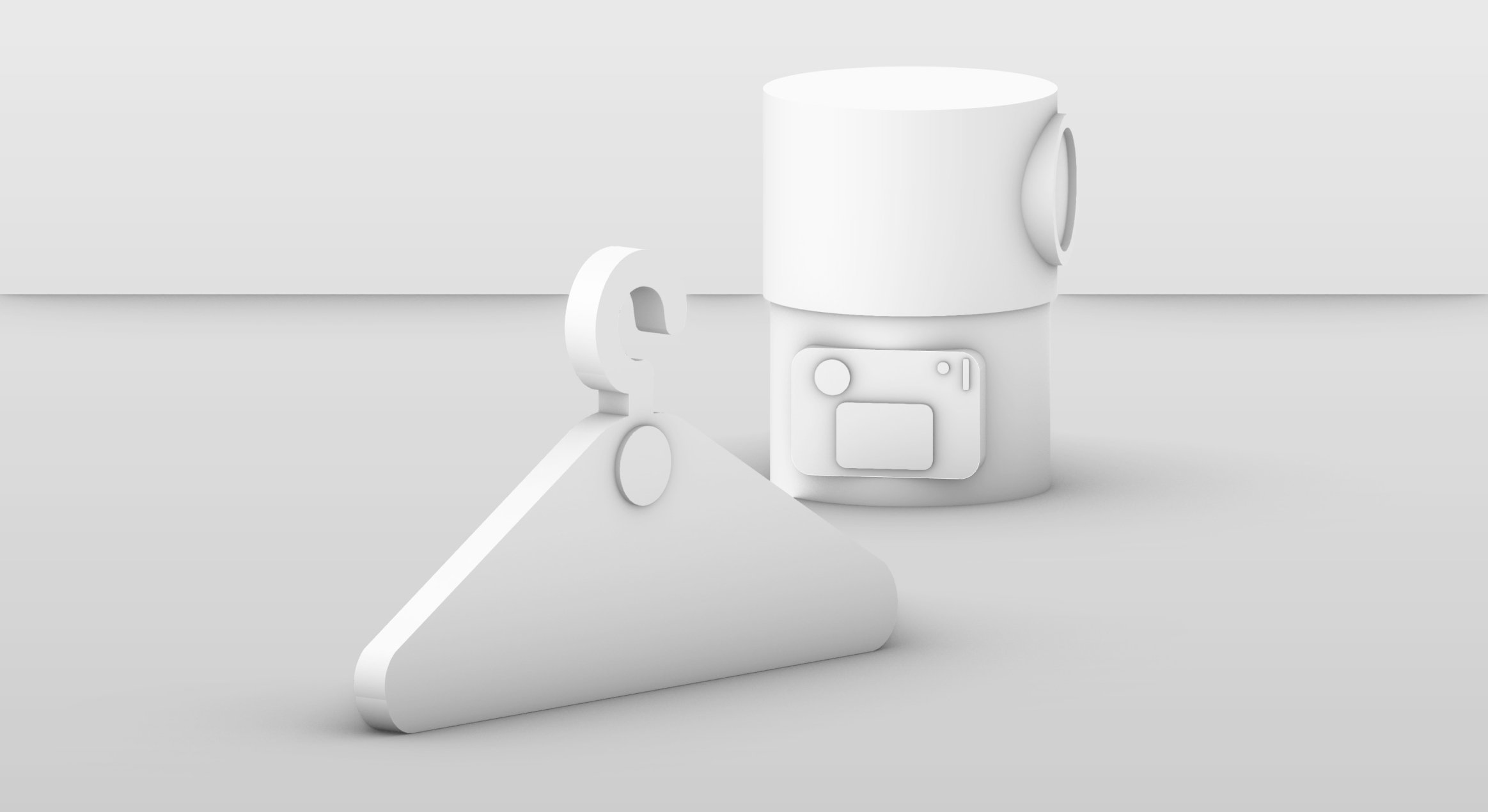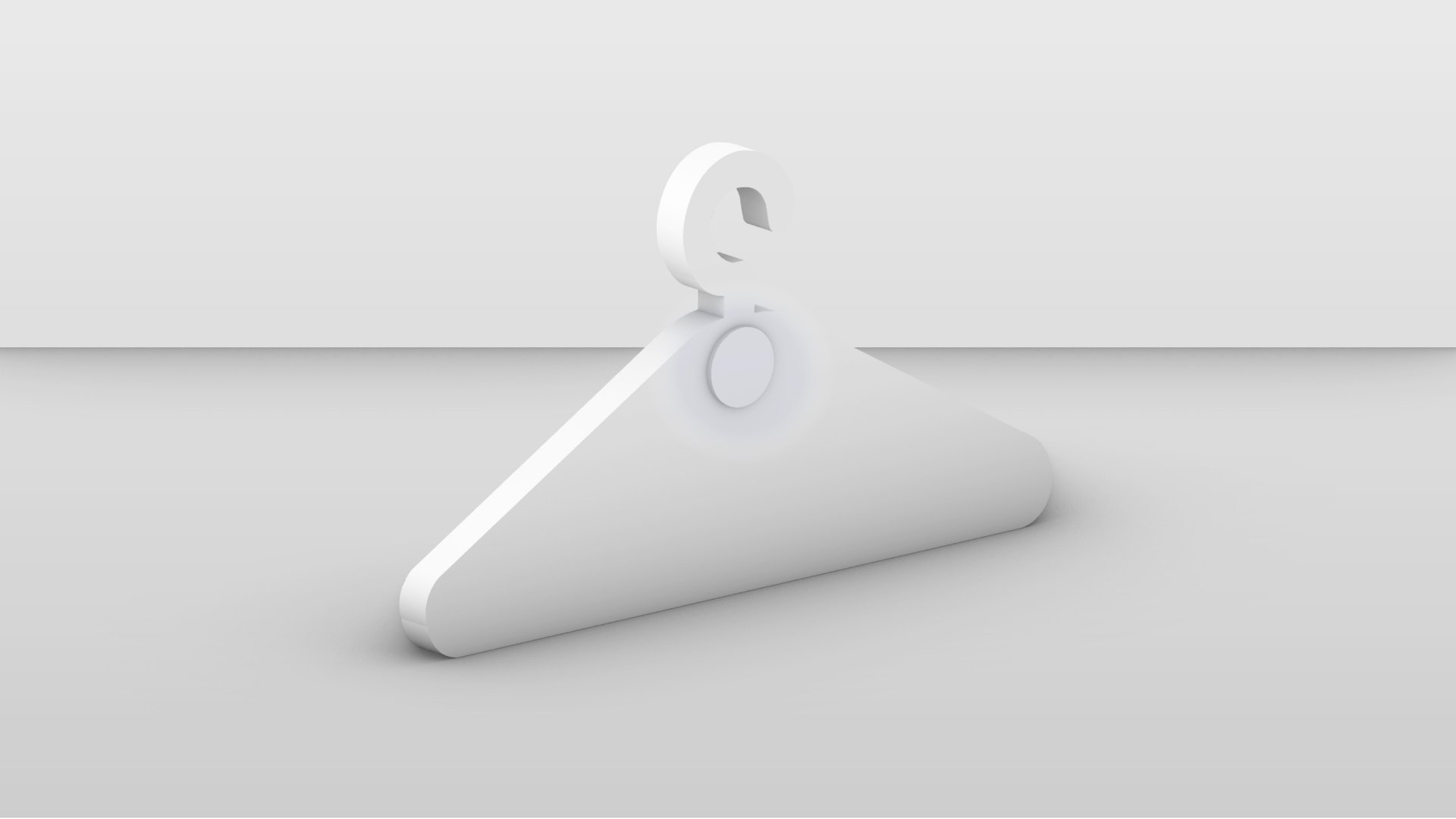How might we increase user efficiency in picking an outfit while reducing clutter in the closet?
Memo is an ecosystem of gestural, tangible, and vocal interfaces that help users evaluate clothing, reduce clutter, and lower anxiety when choosing outfits in their closet.

Duration: 6 Weeks
Project: IoT Ecosystem
Team: Nolan K, JaZee G, Hanna B
Color-Code
Color-Code is a tangible hanger that lights up preset, or designated colors when a user chooses an outfit through Snapshot. This TUI is paired with RFID tags in order to track usage as well as recognize articles of clothing.
The RFID tags, in the form of stickers, are water proof and easily washable. Each Color-Code comes with its own RFID tag.
Snapshot is a GUI that works with the VUI system to view and record outfits. For privacy, users can choose to have only the projector on or clap twice for the camera to automatically pull out of the bottom and start recording.
A 360 motion sensor on the outside of the projector top allows users to place the device anywhere in their room without hindering the abilities of gestures.
Snapshot
Setup shows how the users voice is recorded for details they want to remember about an outfit.
Reminders demonstrates how a user can set a specific note they want to recall later.
MEMO
Reminisce
Remember details about specific pieces in the closet
Design Principles
Organize
Decrease clutter and conserve energy by viewing outfits in advance
Consolidate
View the frequency of wear to determine if it stays or leaves their closet



Process
Memo, our IoT ecosystem, began with research on well-being in the homes and how to accomplish it. The first method used to understand well-being in a home was to hold contextual inquiries which was gained from interviews that I conducted. My team learned that a common place where we could easily boost mood was by the closet where people pick their outfits for the day. After finding secondary research supporting our findings, I started to formulate and experiment with different interfaces which supported our targeted design principles. Together we worked to narrow our design decisions. Our initial direction started off as a broad ecosystem that had no real connectivity, and after a few iterations, we were able to come up with an ecosystem of interfaces that helped well-being through recalling memories and organization.
My overall responsibility included managing the project through completion. This included setting up meetings, distributing work loads, researching, prototyping both physical and digital interfaces, as well as ideation.
Research Insights
-

“Somedays, you just want to feel cute and you are unsure of what to choose”
May, 23
(Young Professional)
-

“Knowing how often I wear my clothes is important so I know where to unclutter”
Sam, 22
(College Student)
-

“I like to remember when and where I’ve gotten my clothes from”
Lina, 22
(College Student)
Secondary Research
-
People want to know how often they use the clothes in their closet. Clutter is something that can degrade well-being in living spaces which is important to mental and physical health.
https://www.psychologytoday.com/us/blog/fulfillment-any-age/201705/5-reasons-why-clutter-disrupts-mental-health
-
One of the most stressful times for people is deciding what to wear before going out; especially if they have multiple events in one day, an important outting they are attending, or they just can’t choose what to wear.
https://www.calmclinic.com/anxiety/clothing-matters
-
Individuals want to remember where they got certain articles of clothing and its importance. Recollecting memeories is shown to be both stimulating and mood boosting.
https://www.frontiersin.org/articles/10.3389/fpsyg.2017.02250/full









